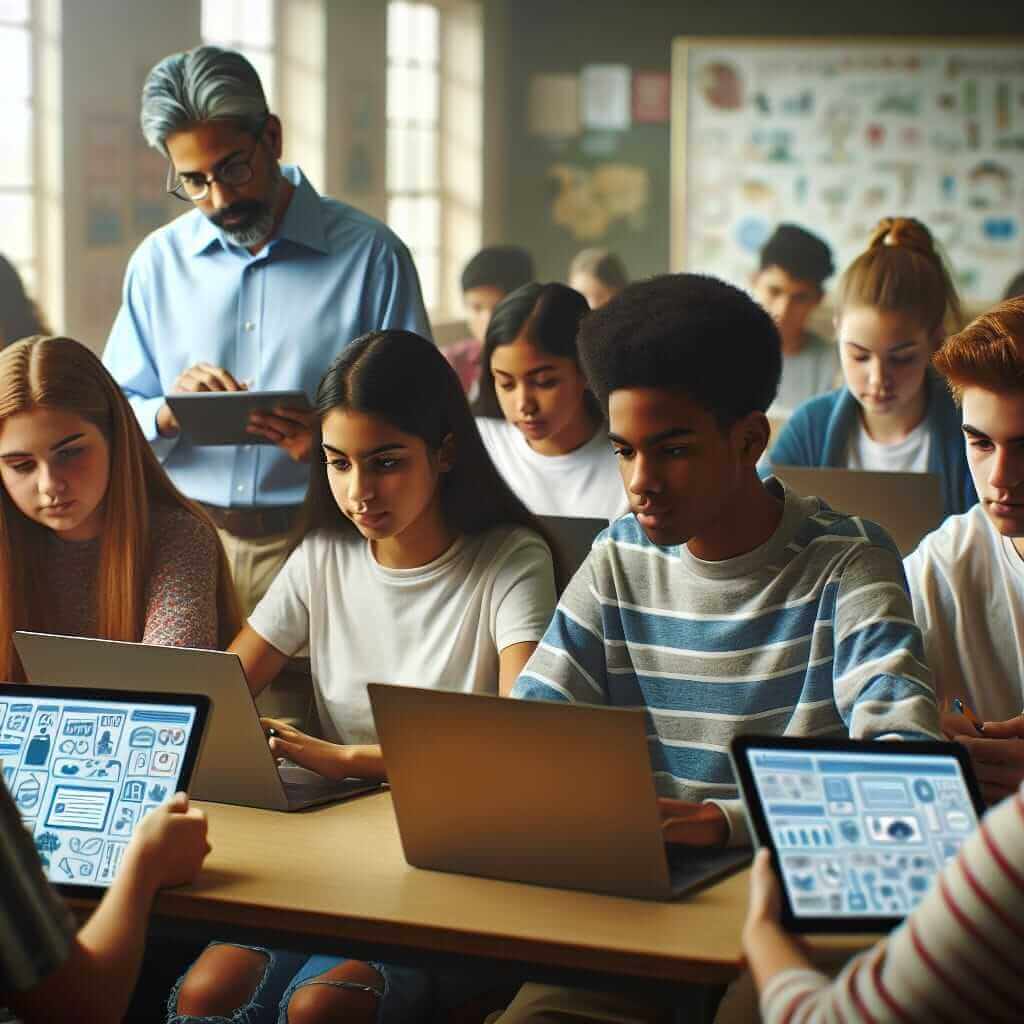Digital literacy plays an increasingly vital role in navigating the digital landscape of the 21st century. This has led to its integration into modern education systems worldwide. This article will explore the importance of digital literacy in education and analyze a common IELTS writing task 2 question on this topic.
Digital Literacy in IELTS Writing Task 2
The topic of digital literacy frequently appears in IELTS Writing Task 2, often intertwined with themes of education, technology, and societal impact. Here are some examples of how this topic might be presented:
- “Some people believe that teaching digital literacy is just as important as teaching traditional literacy skills in schools. To what extent do you agree or disagree?” This question explores the relative importance of digital literacy compared to traditional skills like reading and writing. It requires you to present a balanced argument, acknowledging both viewpoints. This type of question appears frequently in IELTS exams.
- “The widespread use of technology in education has led to some arguing that digital literacy should be a compulsory subject in schools. Discuss the advantages and disadvantages of this view.” This question focuses on the potential benefits and drawbacks of making digital literacy mandatory. You need to present a nuanced discussion, weighing the pros and cons effectively. This type of question appears occasionally in IELTS exams.
- “Digital literacy is essential for success in the modern workplace. How can schools and universities best prepare students for the digital demands of their future careers?” This question delves into the practical applications of digital literacy in the professional world. It prompts you to provide specific examples and solutions for bridging the gap between education and employment. This type of question appears less frequently compared to the first two but is still relevant.
Sample IELTS Writing Task 2 Question and Model Answer
Let’s choose the first question for our model answer:
“Some people believe that teaching digital literacy is just as important as teaching traditional literacy skills in schools. To what extent do you agree or disagree?”
Analysis
This question requires you to take a stance on the comparative importance of digital and traditional literacy skills. It’s crucial to:
- Clearly state your position: Do you strongly agree/disagree or partially agree/disagree?
- Provide strong reasons: Back up your opinion with relevant examples and explanations.
- Address both sides: Acknowledge the opposing viewpoint while maintaining your stance.
Model Answer
In today’s technology-driven world, digital literacy has become an indispensable skill set. While traditional literacy remains fundamental, I firmly believe that teaching digital literacy in schools holds equal importance, if not more, in preparing students for the future.
Firstly, digital literacy is no longer a specialized skill but a basic requirement for navigating modern life. Students need to be proficient in using computers, accessing information online, and engaging in digital communication. From conducting research for assignments to collaborating on projects, these skills are essential for academic success. Moreover, as future citizens and employees, their ability to adapt to rapidly evolving technological landscapes will depend heavily on their digital literacy foundation. For instance, a recent study by the Pew Research Center found that digitally literate individuals are more likely to secure higher-paying jobs and contribute effectively to the economy.
However, the significance of traditional literacy must not be undermined. Reading comprehension, writing skills, and critical thinking – all fostered through traditional literacy– remain the bedrock of a well-rounded education. These skills are transferable across disciplines and form the basis for effective communication and problem-solving.
Therefore, the ideal approach lies in integrating both traditional and digital literacy seamlessly into the curriculum. Schools should focus on fostering a synergistic environment where students can leverage technology to enhance their learning while developing strong foundational skills in reading, writing, and critical analysis. This holistic approach will ensure that students are well-equipped to thrive in the 21st century.
Word Count: 282 words
Important Vocabulary
- Digital literacy (noun) /ˈdɪdʒɪtəl ˈlɪtərəsi/: The ability to use digital technology, communication tools, and online resources effectively.
- Traditional literacy (noun) /trəˈdɪʃənəl ˈlɪtərəsi/: The ability to read, write, and communicate effectively using traditional print media.
- Indispensable (adjective) /ˌɪndɪˈspensəbl/: Absolutely necessary, essential.
- Navigating (verb) /ˈnævɪɡeɪtɪŋ/: Finding one’s way around, managing a situation.
- Proficient (adjective) /prəˈfɪʃənt/: Skilled, competent, adept.
Conclusion
Digital literacy is no longer a luxury but a necessity in the 21st century. By equipping students with the ability to navigate the digital world effectively, we empower them to succeed in their academic pursuits, future careers, and personal lives. As educators and policymakers, it is our responsibility to prioritize digital literacy in education alongside traditional skills, ensuring that future generations are prepared to thrive in our increasingly digital world. To further enhance your understanding of this topic, you might also want to explore the role of public libraries in community education.
Remember to practice writing essays on this and similar topics to improve your IELTS Writing score. Good luck!
